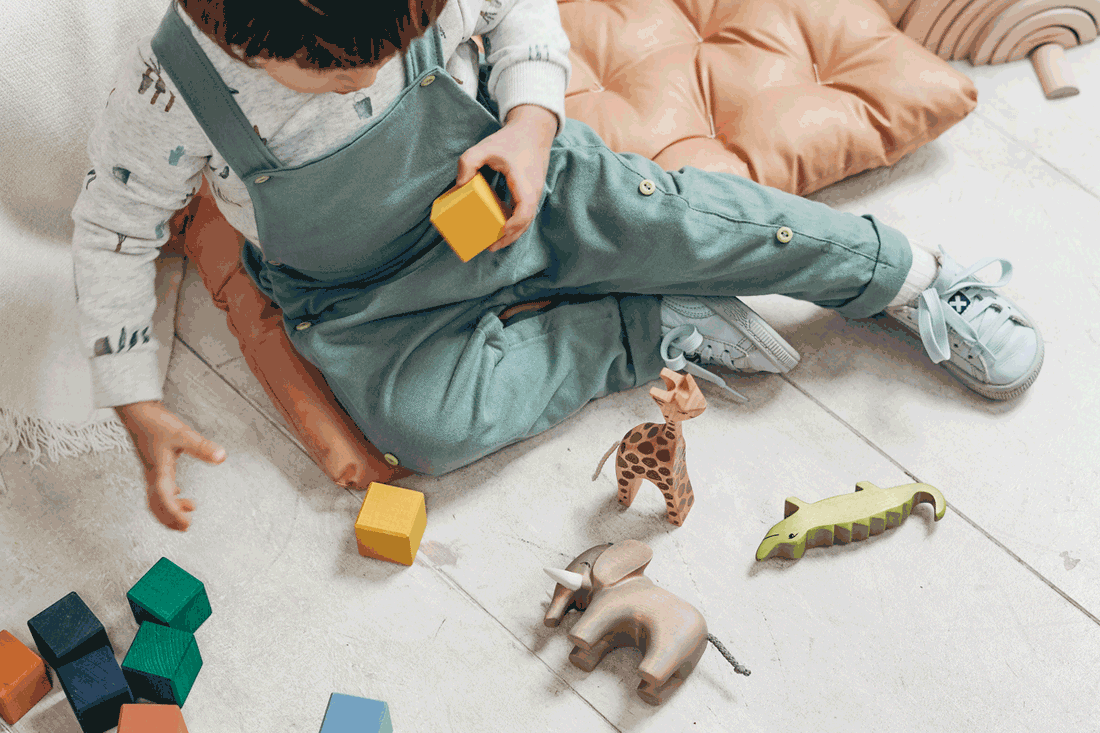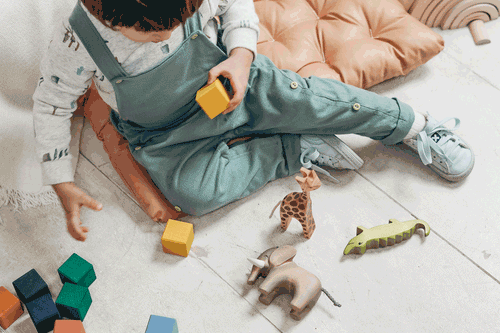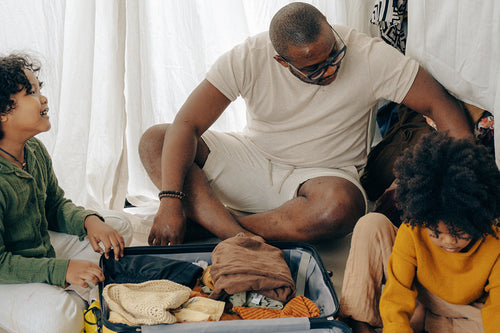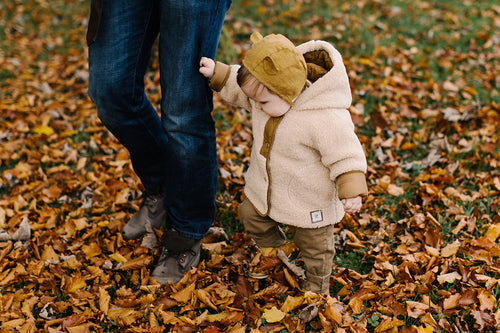5 Easy Toy Storage Solutions For The New Year
Toys, toys, and more toys. If you're feeling overwhelmed with the volume of toys in your home, you're not alone. With birthdays, hand-me-downs and holidays, it’s no wonder little ones end up with toy overload and many play items that often go unused. While decluttering can feel like a daunting task, there's no better time than the present to sort and simplify toys while introducing the life-changing joy of toy minimalism.
Learn how to efficiently eliminate toys to make space for items that encourage creativity and promote developmental skills in toddlers. Get ready to tackle organization with our favorite tips!
Where to start? Read on.
The Benefit of Decluttering Your Child’s Toys
Cut back on the clutter and take a minimalist approach to toys. Many studies suggest too many toys can lead to decreased play. While the average household has nearly 71 toys, few are thoughtfully designed and paired with rich storytelling that helps little ones imagine more creative ways to play. When it comes to purposeful toy purchases, less is more.
- Encourages creative and independent play: Fewer toys allow kids to focus, explore, and play more creatively.
- Quality over quantity: Natural, sustainably made toys have a greater impact than the total number of toys.
- Fewer toys make clean-up easier: Less mess and stress for both kids and parents. Win-win for both.
- Kids value and care for toys more: Allows little ones to appreciate the items they have.
- Change in future toy-buying behavior: Focus on toy intention rather than impulse.
5 Simple Steps to Organize and Reduce Clutter
Step 1: Observe Play Preferences
Before you declutter, watch how your child interacts with toys and play items to see which are used most often and if the toy supports age-appropriate developmental skills. This will help you to determine what to keep or toss.
Here are a few questions to guide your organizational plan:
- Is the toy actively being used?
- Does it promote the development of motor, social, emotional, and language skills?
- Is the toy a duplicate?
- Does it have sentimental value?
- Is the toy broken?
Step 2: Prepare for the Decluttering
Turn decluttering into a family affair by getting little ones excited about the “big cleanup.” Start by discussing the importance of making space for new toys and joy in owning less.
Turn this into a teachable moment. Explain the value of cleaning by reading about it.
Step 3: Separate Toys Into Categories
Grab all the play items and place them in an open space. This will make it easier to see everything at a glance. Now that you know what’s in your playroom, you’re ready to sort and simplify.
These categories will help to guide the process:
- Active toys: activity push walker, balls, chalk, play tent, scooters, slides
- Arts and crafts: crayons, dot markers, glue, non-toxic finger paints, paper
- Baby items: bibs, lovey, play mats, rattles, teether, stacking or nesting toys, shape sorter
- Books: soft books, hard books, picture books
- Building toys: buckets, legos, magnetic tiles, nesting cups
- Creative toys: play dough, magnetic tiles and blocks, shape sorters, wooden blocks
- Dolls and stuffed animals: baby dolls, dolls accessories, plush toys
- Figurine toys: action figures and play accessories
- Games: card games, memory matching games, puzzles
- Imaginative play toys: costumes, play kitchen, puppets, toy food, water play set
- Musical instruments: drums, handbell, piano, tambourine, xylophone
-
Transportation toys: cars, trains, rail and road rubber, trucks
Step 4: Declutter by Category
Get ready to divide and conquer! As you sort through play items, place each into a category to make the process more efficient.
How do you choose what to toss or keep? Helpful hint: Keep items that promote learning, motor skill development, and spark imagination.
- Keep it: Set the keepers aside to be added back to the play space.
- Donate it: Enlist kids in the donation process so they can experience the joy of giving.
- Sell it: Sell toys in good condition at a yard sale, consignment store, or online.
- Recycle it: Instead of tossing, repurpose, repair or recycle.
-
Dispose of it: if the item is broken or unsafe, it’s best to discard it altogether.
Step 5: Create an Organizational System
Now it’s time to create a welcoming play space that encourages budding little creators, makers, and artists to engage in imaginative play and explore their environment. Take control of future toy clutter with an organizational system.
- Label small, kid-friendly bins, boxes, and shelves to organize items
- When putting away toys, group similar play items together
- Instead of putting all toys on display, create a rotation schedule to feature select items
- Implement a one-in, one-out policy
- Introduce open-ended toys that can be used in a variety of ways and encourage open-ended play (promotes critical thinking and problem-solving skills)
- Make future clean-up part of your daily routine (involve little ones in the process!)
Minimize Toys and Maximize Creativity
Congrats! It's time to watch little ones enjoy their new uncluttered space. Remember, an organized play space promotes and encourages play while transporting your little one to the development-rich land of make-believe.
Aim to downsize and declutter toys several times a year - think new year, spring cleaning, before birthdays and holidays.
Now that you've learned how to tame the toys (and keep it that way), take a picture of your newly organized play space and tag @biglittleuniverse on Instagram.




